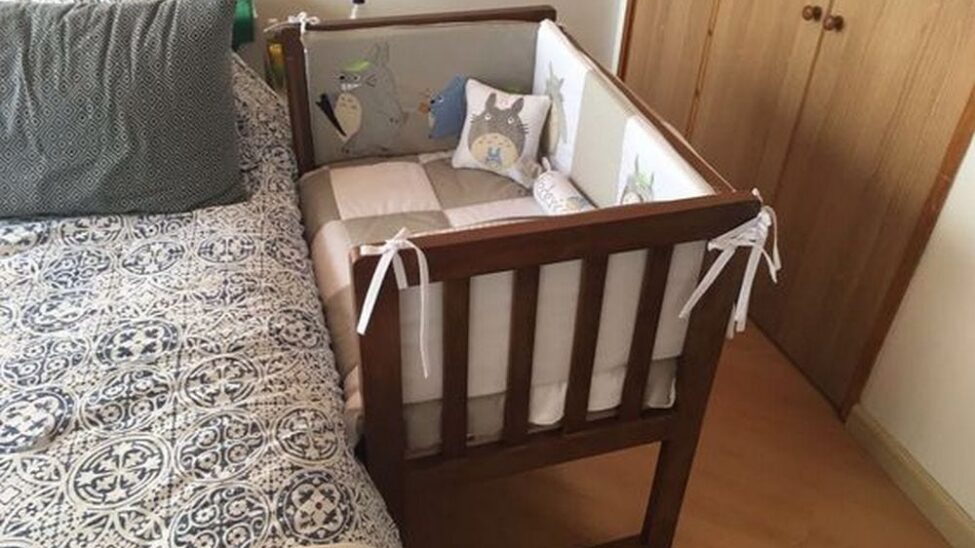
Why Some Parents Choose Co-Sleepers
I didn’t originally plan on using a co-sleeper. It honestly felt like something only ultra-crunchy or super-stressed-out parents did — and I didn’t see myself as either. But after two weeks of fumbling in the dark trying to breastfeed while half-asleep, I was done pretending I could keep up the midnight shuffle between bassinet and bed. That’s when the co-sleeper entered our lives.
The appeal was clear: keep baby close without actually sharing a bed. I wasn’t comfortable with full bed-sharing, but I craved proximity. Our daughter was waking every hour like clockwork, and just knowing I could reach her without fully waking made me feel more in control. That’s something co-sleepers offer — not just physical closeness, but emotional ease in the middle of the chaos.
It’s not always about sleep; sometimes, it’s just about surviving the night without tears — theirs and yours.
How Co-Sleepers Can Change the Night Routine
The biggest shift was how our nights began to feel less mechanical. Before the co-sleeper, every cry meant getting out of bed, bending over, and trying not to trip over the swaddle blankets on the floor. Once we had the co-sleeper, I could simply slide my arm over and soothe her or offer a quick feed without fully waking. It felt more like we were sharing a rhythm rather than reacting to alarms.
This made a huge difference in our energy levels the next day. My partner and I weren’t waking each other up constantly, and our daughter seemed to settle faster when she sensed we were right there. We started talking again in the mornings instead of just reporting how many times each of us had been up. It gave us back small pieces of normal life.
Being close during the night turned down the volume on anxiety. I stopped checking if she was breathing every 20 minutes — because I could see and hear her.
Things I Didn’t Expect Until We Tried One
I thought using a co-sleeper would be easy once it was set up. I was wrong. For one, they take up a surprising amount of space. We had to rearrange the entire bedroom just to fit it snugly next to our bed, and even then, I banged my shin on it at least three times a night for the first week.
There’s also the emotional shift. You think you’ll love the convenience — and you do — but there’s also a strange pressure to sleep lightly all night, just in case. At least, that’s how I felt. Knowing she was right there made me hyper-aware of every breath and grunt.
Also, not all co-sleepers are equally sturdy. Ours looked fine online but wobbled slightly against the bed frame, which made me nervous. We had to DIY an extra latch system just to feel confident it wouldn’t drift apart in the night.
Just because a crib says “co-sleeper” doesn’t mean it’ll work for your bed. Measure everything — twice. Then read real reviews, not just product stars.
Safety and Setup Tips That Actually Help
There’s a lot of debate around co-sleepers, and I get why. You’re putting your newborn right next to you while trying to maintain a safe sleep space. The most helpful thing we did was invest in a co-sleeper with adjustable height and a secure anchoring system. No loose latches, no velcro-only attachments. It locked in place and stayed there.
We also got rid of any extra blankets, pillows, or bedside clutter that could fall into the co-sleeper. I swapped our thick comforter for a light quilt and kept a burp cloth over the crib rail just in case of spit-ups. It’s a small shift, but it meant one less worry during those hazy 2 a.m. feeds.
Lighting mattered more than I expected. A motion-sensor night light meant I didn’t have to fumble for switches or wake the baby fully when I needed to check on her. Honestly, this setup gave me the peace of mind to actually rest, which is half the battle.
You don’t need a Pinterest nursery — just a setup that works in the dark, when you’re running on zero and holding a bottle with one eye closed.
When It Might Be Time to Move On
Eventually, the co-sleeper started to feel small — and not just physically. Around the 5-month mark, our daughter began rolling with intent. It was clear she wanted more space and autonomy. She was bumping into the sides, and instead of sleeping better, she was waking more often from her own movements.
Transitioning her to a crib in her room wasn’t as hard as I thought. Because she was used to sleeping on her own surface (even though it was next to me), she adapted faster than expected. We used the same sleep sack and white noise machine, and kept bedtime routines identical — just shifted the location.
Sometimes, sleep tools aren’t meant to be long-term. They’re stepping stones — helpful for a season, then gently left behind.
If I had to do it again, I’d still choose a co-sleeper — but I’d go into it knowing it’s a short chapter, not a forever solution. It served its purpose beautifully during a time when we needed closeness, but also taught me when to let go and make space.


